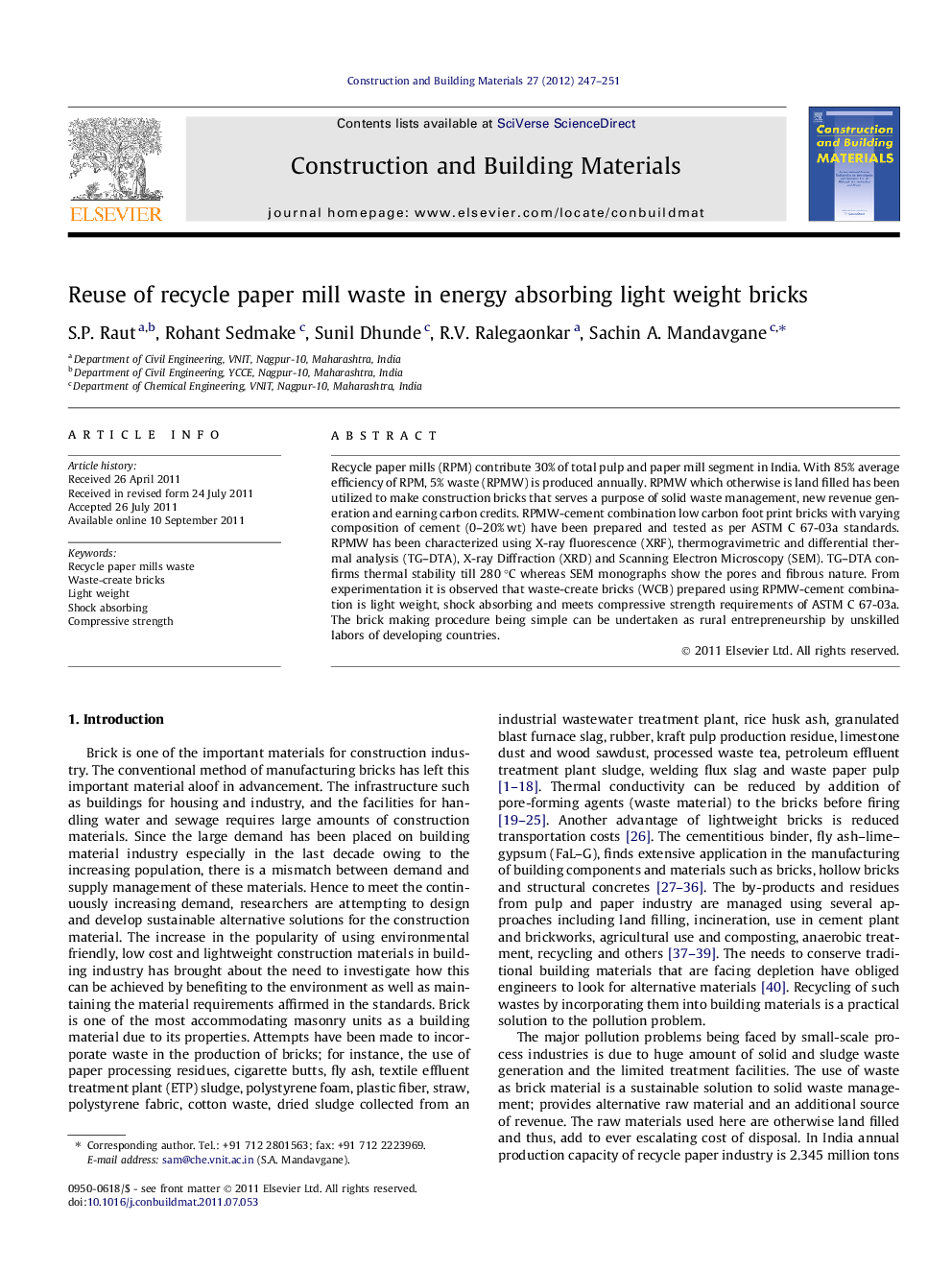| Article ID | Journal | Published Year | Pages | File Type |
|---|---|---|---|---|
| 259355 | Construction and Building Materials | 2012 | 5 Pages |
Recycle paper mills (RPM) contribute 30% of total pulp and paper mill segment in India. With 85% average efficiency of RPM, 5% waste (RPMW) is produced annually. RPMW which otherwise is land filled has been utilized to make construction bricks that serves a purpose of solid waste management, new revenue generation and earning carbon credits. RPMW-cement combination low carbon foot print bricks with varying composition of cement (0–20% wt) have been prepared and tested as per ASTM C 67-03a standards. RPMW has been characterized using X-ray fluorescence (XRF), thermogravimetric and differential thermal analysis (TG–DTA), X-ray Diffraction (XRD) and Scanning Electron Microscopy (SEM). TG–DTA confirms thermal stability till 280 °C whereas SEM monographs show the pores and fibrous nature. From experimentation it is observed that waste-create bricks (WCB) prepared using RPMW-cement combination is light weight, shock absorbing and meets compressive strength requirements of ASTM C 67-03a. The brick making procedure being simple can be undertaken as rural entrepreneurship by unskilled labors of developing countries.
► Recycle paper mill waste (RPMW) utilized to make construction bricks. ► It serves the purpose of solid waste management, revenue generation and earning carbon credits. ► Bricks with varying composition of RPMW (0–20% wt), and cement prepared. ► Brick meets ASTM C 67-03a standards. ► Bricks are light weight and energy absorbing.
